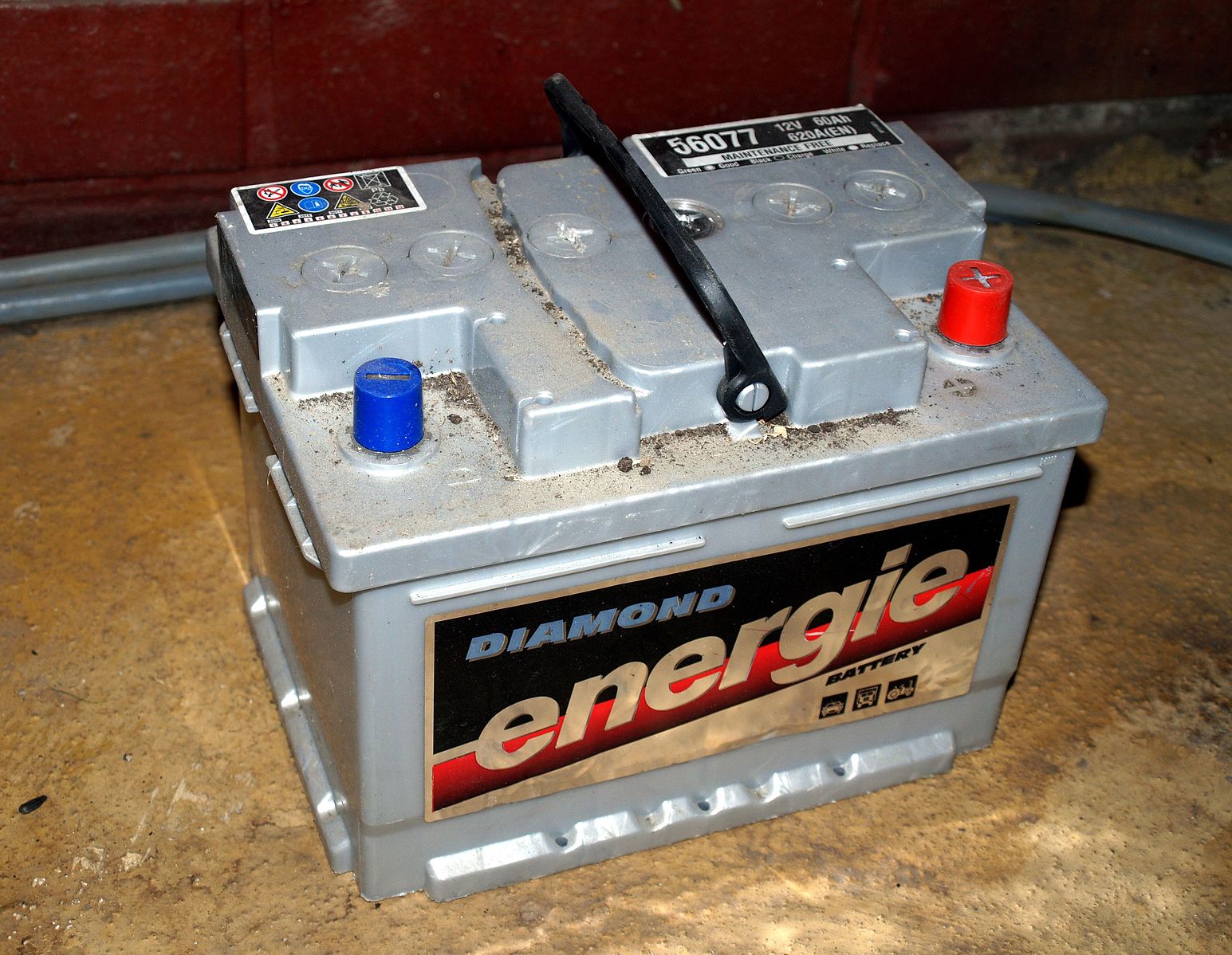Difference Between Car Battery and Marine Battery
A battery doesn’t produce electricity on its own; in fact, it stores electricity. Since electricity cannot be stored directly, it is essential to leverage an indirect form of storage. Batteries, particularly lead acid batteries remain the predominant energy storage device till now and one of the main portable sources of electric power with a wide range of applications like cars, boats, telecommunications, and so forth. Their convenience and usage lies in the wide range of sizes in which they are manufactured or assembled into packs, their portability, and their capacity to supply electric power instantly. That being said, the batteries that sit in your car or truck is very different from the ones that power your boat. We take a look at some key differences between car batteries and marine batteries.

What is a Car Battery?
A car battery or an automotive battery is a rechargeable battery that provides the juice to kickstart the electrical components of a car. The moment you turn the ignition on, a signal is being sent to the battery which then prompts the battery to convert the chemical energy stored in it into electrical energy. This zap of electric power goes to the starter which then cranks the engine. A battery is the most essential part of combustion engine vehicles. The standard car battery used in the vehicles today is a 12-volt lead acid battery which powers your vehicle and delivers voltage to its starter.
How does a car battery work?
The lead acid battery used in cars is a heavy-duty automotive battery with lead plates inside the unit which are submerged into the sulphuric acid. This results in a chemical reaction which releases energy and provides voltage and current. In a car battery, six multi-pate cells, each giving 2 V, are connected in series in a single enclosure to produce a 12 V battery.

What is a Marine Battery?
Marine batteries, as the name suggest, are special purpose batteries used to power a boat. They are much powerful and robust batteries than a regular car battery, with enough starting power to crank over high compression engines and heavy-duty components to withstand the pounding and vibration that you normally feel when you’re onboard. Like a car battery, it’s a power storage device used to start the engine or power the lights and accessories, such as pumps, radios, and electronics. Like car batteries, the most common types of marine batteries use lead acid technology. The two most common types of batteries used in boats today are starter batteries and deep cycle batteries. Deep cycle batteries are the ones used in boats equipped with trolling motors.
Difference between Car Battery and Marine Battery
Construction
– Car batteries are characterized by a larger number of thin, closely spaced porous plates, which provide maximum exposure of active plate material to the electrolyte while offering minimal internal resistance. Marine batteries, particularly deep cycle batteries have fewer plates, but they are thick, high density and flat pasted, or a combination of flat and tubular plates. There are also dual purpose batteries, which are a combination of deep cycle and starter batteries.
Rating
– Car batteries are rated in Cranking Amps (CA) or Cold Cranking Amps (CCA) – an industry-standard rating that demonstrates a battery’s ability to start the engine in freezing cold temperatures. This is the maximum output amperage a battery can sustain for 30 seconds in cold weather (- 18 degrees Celsius). Marine batteries, on the other hand, are rated in Marine Cranking Amps (MCA), which defines the number of amps the battery can deliver at 0 degrees Celsius for a period of 30 seconds, and maintain at least a voltage of 1.2 volts per cell.
Durability
– One of the major differences between the two batteries is how they are constructed. Car batteries are purely made for cold cranking amps. They can put as much amperage as they can to start a car, especially in cold weather. They are not made for prolonged use without some way of recharging. Marine batteries, especially deep cycle batteries are not only made for cranking power but they can also be used for prolonged discharge at high rates for a significant amount of time.
Sturdiness
– Marine batteries, unlike car batteries, are more robust, stronger and durable to take a heavy beating on the waters and are designed to perform other diverse set of tasks. Cars are fitted with really good suspension to provide a relatively smooth ride, but boats are getting hammered and beaten down constantly. So, marine batteries are ruggedly constructed to withstand all the pounding and vibration that can occur onboard.
Car Battery vs. Marine Battery: Comparison Chart

Summary
The components used in marine batteries tend to be more robust and rugged to take some heavy beating, and the plates are thicker. Car batteries are not made for prolonged use without some way of recharging, while marine batteries can be used for prolonged discharge at high rates for a significant amount of time. Marine batteries are built to withstand the bumpy rides and all the vibration and pounding without incurring any damage, unlike car batteries which are built for a smoother ride.
- Difference Between Caucus and Primary - June 18, 2024
- Difference Between PPO and POS - May 30, 2024
- Difference Between RFID and NFC - May 28, 2024
Search DifferenceBetween.net :
Leave a Response
References :
[0]Dell, R.M. and D.A.J. Rand. Understanding Batteries. Cambridge, United Kingdom: The Royal Society of Chemistry, 2001. Print
[1]Pavlov, D. Lead-Acid Batteries: Science and Technology: A Handbook of Lead-Acid Battery Technology and Its Influence on the Product. Amsterdam, Netherlands: Elsevier, 2017. Print
[2]Payne, John C. The Marine Electrical and Electronics Bible (Second Edition). New York, United States: Sheridan House Inc., 1998. Print
[3]Payne, John C. Understanding Boat Batteries and Battery Charging. New York, United States: Sheridan House Inc., 2003. Print
[4]Image credit: https://commons.wikimedia.org/wiki/File:Diamond_Energie_car_battery.jpg
[5]Image credit: https://live.staticflickr.com/3173/3031359806_f4b2f649bb_b.jpg
